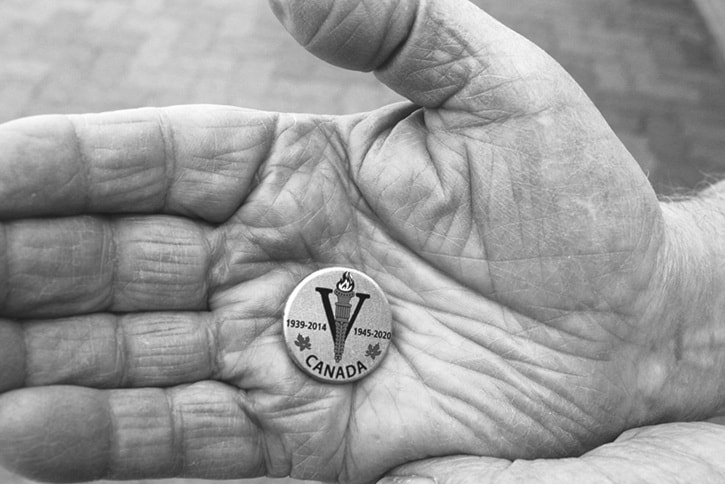A local veteran is honoured to receive a lapel pin for being part of the Second World War but he feels the token has more to do with politics than appreciation.
“I just think if this wasn’t an election year we wouldn’t be seeing anything like this. This is just a political gimmick for votes and it ain’t gonna work. A piece of tin can’t buy my vote,” Buzz Henshaw, a Keremeos resident said. “I just don’t understand why these pins didn’t come earlier. There were many more people that deserved them.”
Henshaw is also upset that he had to apply for the lapel pin instead of just receiving it from the Minister of Veterans Affairs and that families of those who have died could not apply.
“They have all our information certainly. They know who’s alive and where we live. I think this is all a public relations stunt from the Harper government,” he said. “I just think these pins could have been a nice keepsake for families who might have lost a veteran. It would be nice for them to have and to know that the government appreciated their loved one’s efforts too.”
The pin was released to mark the 75th anniversary of both the beginning of the war and the end, which will be celebrated in 2020.
The design of the commemorative pin and the illustration on the certificate are based on the original Victory Nickel which features a flaming torch and a large ‘V’ standing both for victory and the coin’s denomination. The coin was originally in circulation from 1943 to 1945, and was re-issued in 2005 to commemorate the 60th anniversary of Victory in Europe Day.
“I am very appreciative to receive it. I just wish everyone else was too,” he said.
Henshaw enlisted underage at 17. Although he didn’t know it at the time the war would be over before he could be called overseas to fight. He stayed in the forces about 18 months after the war, never leaving Canada.
“At the time I was a little upset, I guess. A little disappointed that I didn’t leave Canada,” he said. “I joined because it was the right thing to do. But now that I’m older, I think, I was very lucky. I was very lucky.”
Between 1939 and 1945 more than a million Canadians served in uniform. At that point the country only had a population of 11 million people.
More than 45,000 Canadians lost their lives during the war and over 55,000 were wounded.
